Elemental "Fingerprinting" for Quality Control and Forensic Applications
One of the promises of array detector inductively coupled plasma (ICP) systems has been the ability to measure all elements in an unknown sample. Sometimes referred to as elemental fingerprinting, this capability can be extremely powerful for quality control (QC) and forensic applications. To take advantage of this capability, the ICP system employed must provide full wavelength coverage as well as the spectral data handling tools needed to do the "fingerprinting." This article will demonstrate some of the elemental fingerprinting capabilities of ICP.
Imagine for a moment that you are a forensic scientist working for the FBI. You are attempting to determine if several seemingly unrelated crimes might be linked. In this instance, the FBI forensic chemistry laboratory needs to determine whether bullet lead fragments from different crime scenes can be linked to a single perpetrator. This is an analytical challenge that is ideal for elemental fingerprinting. This article will show how ICP's wavelength coverage and spectral data-handling capabilities make it possible to fingerprint bullet lead.
Experimental
For this work, samples were introduced into the plasma using a laser ablation solid sampling device rather than dissolving them and using conventional solution nebulization. For some applications, the laser's ability to directly vaporize a small quantity of the sample in question (5–1000 mg) can simplify the sample-handling process and help to preserve samples for future investigative work. In this case, a New Wave Research Macro 266 laser ablation system (Fremont, California) was interfaced to the Teledyne Leeman Labs Prodigy ICP system (Hudson, New Hampshire). Figure 1 shows the lead fragments mounted in the laser cell. The white material in the photograph is a removable adhesive used to hold the fragments in position in the cell.

Figure 1: Lead fragments mounted in a laser cell.
Operating conditions for the laser system and the ICP are listed in Table I.
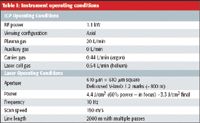
Table I: Instrument operating conditions
Results and Discussion
The first step in this experimental work was to acquire the full ICP spectrum for the bullet fragments in question. An identical spectrum was then acquired for a high-purity lead blank. A spectral subtraction of the blank from each of the fragments was then performed using the ICP system's software. The net result is the elemental fingerprint for each fragment. A spectrum from an unknown lead sample and a high-purity lead blank are shown in Figures 2 and 3. The resulting elemental fingerprint is shown in Figure 4.
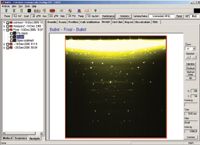
Figure 2: Spectrum of unknown lead fragment 1.
Once the analyst has the resulting elemental fingerprint (spectrum) for each sample, there are multiple options for the next course of action. For example, one might choose to perform a qualitative analysis of the fingerprint spectrum or to do a fully quantitative analysis on a select number of elemental constituents.
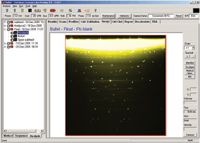
Figure 3: Spectrum of high purity lead blank.
A qualitative analysis can be performed within the software, as shown in Figure 5.
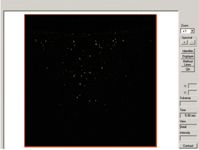
Figure 4: Elemental fingerprint of unknown lead sample.
For a semi-quantitative analysis, the software performs a statistical calculation based upon the presence of the emission lines contained in the spectrum and then displays a table of the elements found in the sample. Qualitative analysis also can be performed on spectra without first performing a spectral subtraction. This is demonstrated in Figure 6 for a solution containing a mixture of 21 elements.
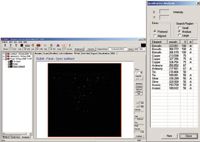
Figure 5: Display of the software's "QA" function for a bullet lead spectrum.
For researchers who need to perform fully quantitative analysis following acquisition of the elemental fingerprint, the conventional approach of calibration followed by analysis is performed. Results from three sample materials examined in this work are shown in Table II.
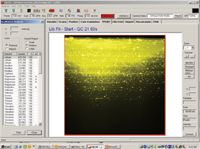
Figure 6: Results from a qualitative analysis of a solution containing 21 elements.
Other Applications for Elemental Fingerprinting
Other applications in which elemental fingerprinting has become important include identification of the country of origin of crops and detection of drug tampering. Crops such as citrus, coffee, and nuts take on an elemental fingerprint representative of the soil in which they were grown. Because soil composition differs markedly around the world, it tends to be a relatively easy task to identify the country of origin of crops.

Table II: Quantitative analysis of three lead-based materials*
A recent area of significantly heightened concern is with counterfeit drugs and drug tampering. This has become important for reasons including homeland security, health and human safety, and patent infringement, to name just a few. A counterfeit drug is one that is manufactured by an unlicensed, uncontrolled facility that in effect is "stealing" the brand name of an over-the-counter or prescription drug maker. These counterfeit facilities often sell their drugs over the internet and are likely to be selling drugs of questionable safety and efficiency. Elemental fingerprinting has been a very powerful tool in determining the origin of drugs.
Garry Kunselman is with Teledyne Leeman Labs, Hudson, New Hampshire. Lawrence Neufeld is formerly Product Manager with New Wave Research, Fremont, California. He is currently President of Spectron, Inc., Ventura, California.
References
(1) R.D. Koons and D.M. Grant, J. Forensic Sci. 47(5), 950–958 (2002).
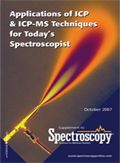
The State of Forensic Science: Previewing an Upcoming AAFS Video Series
March 10th 2025Here, we provide a preview of our upcoming multi-day video series that will focus on recapping the American Academy of Forensic Sciences Conference, as well as documenting the current state of the forensic science industry.
Previewing the American Academy of Forensic Sciences Conference
February 14th 2025This year, the American Academy of Forensic Sciences Conference is taking place from February 17–22, 2025. We highlight the importance of spectroscopy in this field and why we’re covering the conference this year.